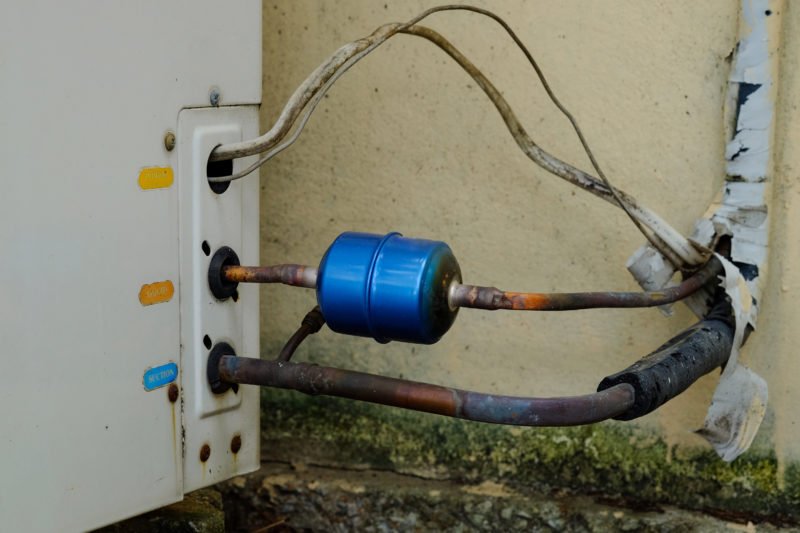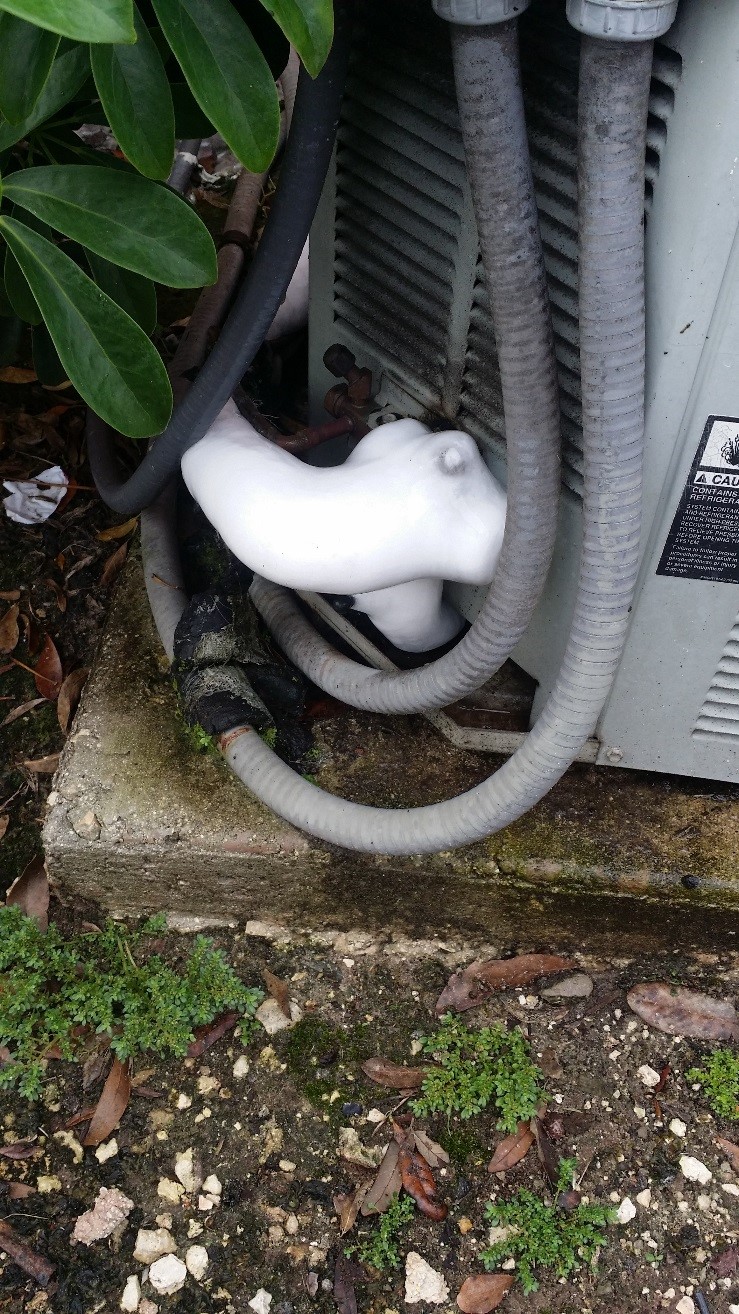Icy Air Conditioner Pipe - Recognizing and Fixing the Issue Promptly
Icy Air Conditioner Pipe - Recognizing and Fixing the Issue Promptly
Blog Article
What are your thoughts and feelings on Air Conditioner Frozen? How To Fix your Frozen AC Line?

Introduction
Discovering that your air conditioning pipeline is frozen can be concerning, particularly during warm summertime when you count on your air conditioning system one of the most. Understanding what to do in such a circumstance is essential to stop additional damage to your air conditioning system and ensure your convenience inside your home.
Understanding the Causes
A number of aspects can add to the freezing of an AC pipeline. Understanding these causes can assist you resolve the problem effectively.
Absence of Airflow
One usual cause of an icy air conditioner pipeline is inadequate airflow. When the airflow over the evaporator coil is limited, it can create the coil to drop below freezing temperature, bring about ice formation on the pipeline.
Low Refrigerant Levels
Inadequate cooling agent degrees in your air conditioning system can likewise cause an icy pipe. Reduced refrigerant levels can create the pressure in the system to go down, resulting in the freezing of wetness on the evaporator coil.
Winter Conditions
In cooler climates, freezing temperature levels outside can contribute to the cold of AC pipes. If your AC device is not effectively insulated or if there are leakages in the ductwork, chilly air can penetrate the system, triggering the pipe to freeze.
Dirty Air Filters
Dirty or clogged up air filters can restrict air movement in your air conditioner system, causing various problems, consisting of a frozen pipe. It's necessary to change or clean your air filterings system frequently to make certain correct airflow and avoid ice accumulation.
Indicators of a Frozen AC Pipe
Acknowledging the indications of an icy air conditioner pipe is vital for punctual action.
Minimized Airflow
If you notice a considerable reduction in air movement from your vents, it can show an icy pipe.
Ice Buildup on the Pipe
Noticeable ice accumulation on the cooling agent line or the evaporator coil is a clear indicator of a frozen air conditioner pipeline.
Odd Sounds from the Unit
Uncommon audios, such as hissing or gurgling, coming from your AC device can indicate that there's ice existing on the pipeline.
Immediate Actions to Take
When faced with an icy a/c pipe, it's essential to act promptly to avoid further damages to your air conditioning system.
Shutting off the air conditioner
The very first step is to turn off your air conditioning unit to avoid the system from running and intensifying the problem.
Looking for Blockages
Inspect the area around the indoor system for any kind of obstructions that may be blocking air movement, such as furnishings or curtains.
Defrosting the Pipe
You can utilize gentle techniques like putting towels taken in cozy water around the icy pipeline to help thaw it slowly.
Safety nets
Taking preventive measures can help avoid future occurrences of an icy AC pipe.
Normal Maintenance Checks
Arrange routine upkeep checks with an expert HVAC specialist to guarantee that your AC system is running efficiently.
Changing Air Filters
Consistently change or cleanse your air filters to prevent airflow constraints and keep optimum efficiency.
Protecting Exposed Pipes
If your AC pipes are subjected to cold temperatures, think about protecting them to stop freezing during winter months.
Looking For Professional Help
If DIY methods fail to fix the concern or if you're unsure regarding exactly how to continue, it's ideal to seek support from a qualified HVAC specialist.
When DIY Methods Fail
If your attempts to thaw the pipe or address various other problems are not successful, it's time to call in a professional.
Relevance of Hiring a Professional HVAC Technician
A qualified HVAC professional has the expertise and devices needed to identify and repair issues with your air conditioner system securely and efficiently.
Verdict
Taking care of a frozen air conditioner pipe can be a frustrating experience, yet understanding just how to react can assist minimize damage and recover comfort to your home. By recognizing the reasons, recognizing the indications, and taking punctual activity, you can efficiently attend to the issue and stop future events.
What to Do If Your AC Line Is Frozen
Make Sure All Supply and Return Air Vents Are Open
If you notice problems with airflow, the first thing you should do is check your supply and return vents. Supply vents distribute clean, conditioned air throughout your home. As this air becomes stale, it’s pulled into the return vent, where it’s reconditioned before being sent back out through the supply vent.
When these vents are closed, air won’t flow in the home. Before examining your AC, check the vents in every room and ensure they’re all open.
Check for a Dirty Air Filter
Another possible cause of limited airflow is a dirty air filter. Your air conditioner’s filters catch elements you don’t want to breathe in, such as dirt and dust. Over time, filters can become clogged, ultimately blocking air from flowing in and out. The lack of airflow can then cause the entire coil to freeze and will completely restrict any air from moving through it. The AC may need to be powered off for one to two days to allow the coil to thaw after replacing the filter to allow proper functioning of the unit. This debris can also accumulate on your AC’s evaporator coil, requiring a more serious repair. In general, air filters should be cleaned regularly (about every two weeks).
Assess Your Outdoor Unit
In addition to checking your AC, assessing the outdoor unit is a good idea. Also known as the condensing unit, it works with your interior unit to release heat outside. An issue with the outdoor unit can result in rising internal temperatures.
Overgrown Shrubs or Clogged Leaves
From leaves and twigs to shrubs and debris, there’s no shortage of outdoor elements that can accumulate around your condensing unit. When these elements get lodged inside the unit, they can block airflow. Fortunately, removing the blockage can solve the problem.
Sounds of a Broken Fan
Shrubs and leaves aren’t the only things that can impede your outdoor unit’s airflow. If the fan is broken, the unit won’t be able to properly get rid of heat — which means the internal temperature won’t go down. First, make sure the fan is spinning. If it is, check for the following sounds of a broken fan:
Buzzing Rattling Screeching Hissing Clicking Preventative Measures
Nobody wants to deal with a frozen AC line. In addition to causing problems with your air conditioner, they require professional repairs. On the bright side, there are preventative measures you can take to help ensure this issue doesn’t arise in the first place.
https://www.coopergreenteam.com/blog/what-to-do-if-ac-line-frozen

As a serious person who reads on How can I fix an air conditioner’s frozen pipe?, I thought sharing that piece of content was essential. Are you aware of anybody else who is truly interested in the niche? Do not hesitate to promote it. Thanks a lot for your time. Don't forget to check our site back soon.
Get Quote Report this page